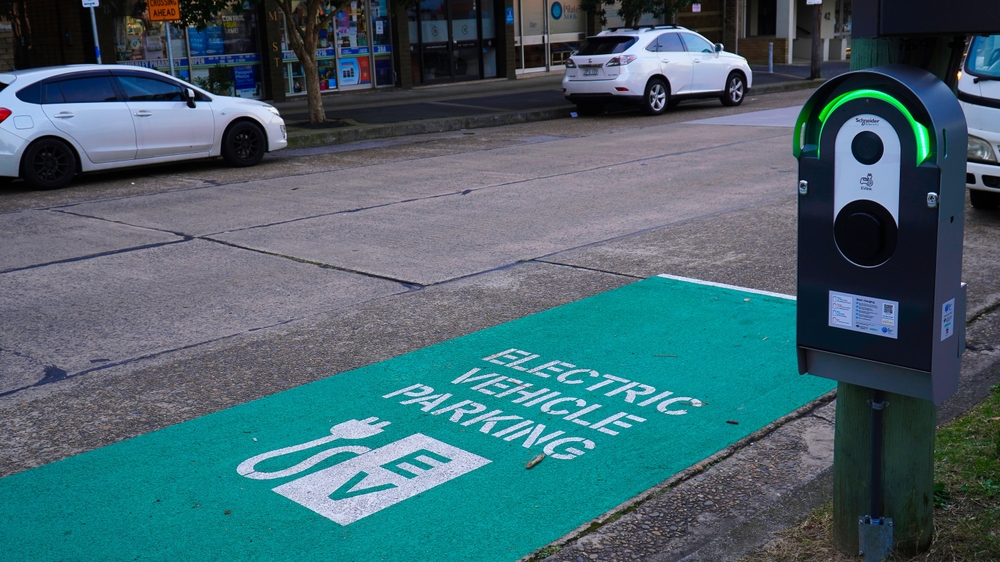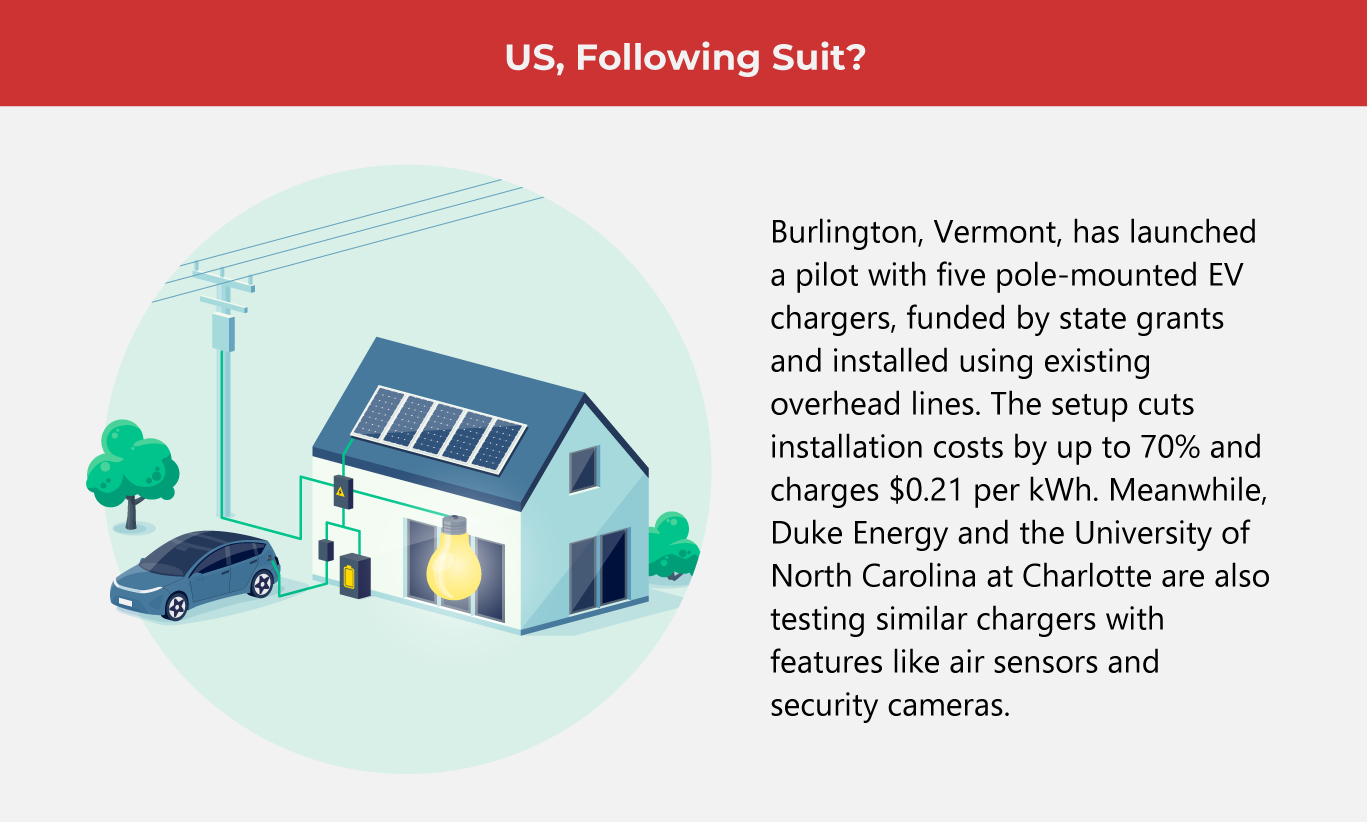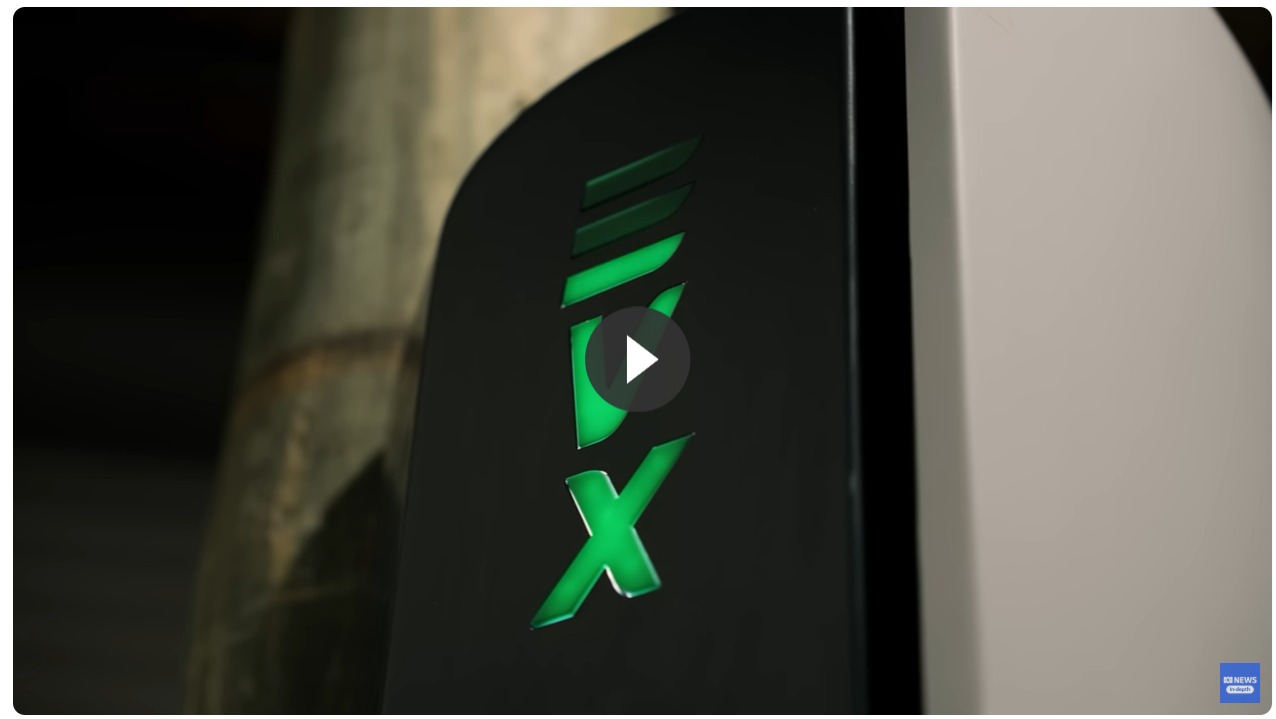Why Pole Charging Could Be the Next Big Thing in EVs

In a clever push to expand electric vehicle (EV) charging access, Australia is turning ordinary power poles into practical charging stations. By using infrastructure already in place across streets and neighborhoods, this solution offers a cost-effective way to support growing EV demand. Drivers can top up their batteries while running errands, attending appointments, or enjoying a meal, making the system both convenient and future-ready.
Global demand for EVs surged in 2023, with nearly 14 million new units hitting the roads, marking a significant shift in the automotive market. EVs now make up close to 20% of all new car sales, a remarkable climb in just five years. In response, global manufacturing companies are overhauling their production strategies, driven by falling costs, improved technology, and growing consumer appetite for cleaner transport.
However, Australia has lagged, with adoption rates trailing and many drivers showing signs of hesitation. A major roadblock remains the limited availability of public charging points, prompting some to return to hybrids. Studies also reveal that nearly half of Australia’s EV owners are now considering a move back to petrol-powered cars due to charging frustrations.
(Also read: What EV Charger Is Perfect for You?)
Pole charging: the EV trend to watch?
Australia’s slow EV uptake is closely tied to a patchy public charging network, leaving many drivers uncertain about long-distance travel. To build trust in electric transport, government action is needed to roll out smarter, more accessible solutions. Expanding charging access not only boosts confidence in EVs but also highlights their long-term economic value for everyday Australians.
With just one public charger for every 68 electric vehicles, the local charging network is struggling to keep pace. This falls well short of the global average of 11, raising concerns about the operational efficiency required to support Australia’s growing number of EVs on the road.
A promising fix to the EV charging shortfall may already be hiding in plain sight. Utility or power poles, found on nearly every street and already wired to deliver electricity, offer a ready-made platform for expanding public charging stations. With proper reliability testing in place, converting this existing infrastructure could help communities accelerate the shift to lower-emission transport, improve convenience for drivers, and strengthen grid reliability.
Such an approach also provides a practical way to expand charging access without the high costs and disruptions associated with major construction projects. This strategy allows for faster, curbside rollout and supports broader goals around sustainability.
However, current rules limit power distributors from supporting curbside EV charging alongside retail providers. Redefining this infrastructure as part of the distribution system could streamline test and system development efforts, enabling utilities to install chargers and open the network to commercial operators, ultimately improving access for drivers.
Recent projections show that smarter regulations enabling curbside EV charging could fast-track charger installations nationwide, supporting the adoption of up to one million more electric vehicles by 2030. Combined with broader grid improvements, this momentum would not only lower fuel costs for drivers but also contribute to stronger environmental indicators through reduced emissions and cleaner urban transport.
(Also read: A Deep Dive into China’s EV Empire)

How Sydney is plugging in
Sydney-based startup EVX is rolling out pole-mounted EV chargers across metropolitan Sydney and the New South Wales (NSW) mid-north coast, with around 200 units now in operation. It aims to mirror the ease and affordability of at-home charging for city drivers who lack private parking. According to CEO Andrew Forster, the idea is to place chargers where cars are already parked, making weekly top-ups simple and accessible for most urban users.
Forster added that most inner-city EV drivers only need to recharge about once a week, thanks to the range added in just an hour of curbside charging. Depending on the vehicle, a single session can deliver between 50 and 120 kilometers, enough to cover typical weekly commutes with ease.
EVX secured a $2.4 million grant from the Australian Renewable Energy Agency to support the rollout of 250 chargers across NSW, South Australia, and Victoria. The NSW government is providing supplementary financial support to help roll out 500 curbside EV chargers, working alongside multiple partners to deliver the project.
Larger energy players are now eyeing the curbside charging. Distribution Network Service Providers, which manage much of the existing pole infrastructure, argue that with regulatory adjustments, they could deploy chargers rapidly and at scale. Their involvement reflects rising industrial market interest in the future of public EV charging.
Sydney-based utility Ausgrid is also pushing to expand its role in EV charging by seeking regulatory changes that would allow it to own and maintain curbside charger hardware. While current rules restrict networks to managing physical infrastructure, Ausgrid’s subsidiary PLUS ES has launched a pilot program and secured government funding to begin rolling out 1,000 chargers. However, the company says broader regulatory support is needed to scale up efforts.
Where pole charging might falter
Although EV chargers play a key role in supporting the renewable energy market, several challenges could complicate their widespread rollout.
Rolling out curbside EV chargers on a large scale makes sense, but experts caution that equity and competition must remain central to the process. To ensure a fast and fair transition, infrastructure installation should remain open to competitive bidding, rather than being handed over exclusively to existing network operators.
Allowing distribution networks to lead the rollout without proper oversight could result in higher costs and inefficiencies, with consumers left footing the bill. Since these services operate as monopolies, drivers have little choice if service is poor or delayed, making transparency and accountability essential before granting control to incumbent utilities.
If distribution networks take the lead on curbside EV charging, the key question becomes how the costs will be covered. Currently, consumers fund the energy network through service charges on their power bills, raising concerns about whether EV infrastructure would add to that burden.
Industry leaders suggest several funding models are possible, including government grants, user-pays systems, or shared costs across all customers in recognition of the broader benefits of EV adoption.
In Victoria, networks have formally applied to the Australian Energy Regulator to pilot a rule change that would allow them to install and maintain curbside chargers. It’s the first proposal of its kind, now open to public consultation.
Meanwhile, similar plans are under review in NSW, as regulators and providers weigh the best path forward for expanding EV infrastructure.

As one of the Top 20 EMS companies in the world, IMI has over 40 years of experience in providing electronics manufacturing and technology solutions.
We are ready to support your business on a global scale.
Our proven technical expertise, worldwide reach, and vast experience in high-growth and emerging markets make us the ideal global manufacturing solutions partner.
Let's work together to build our future today.
Other Blog



